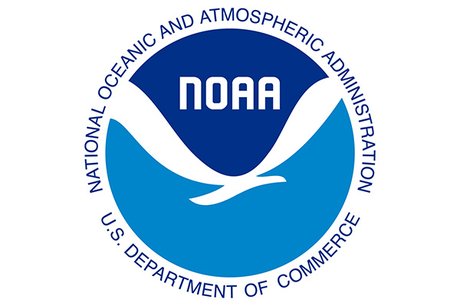Integrating Climate Impacts into Atlantic Bluefin Tuna Stock Assessment
What is happening to giant bluefin tuna in the Gulf of Maine?
Our project is examining atmospheric and oceanographic changes that may have impacted the distribution of giant bluefin tuna in the Gulf of Maine. This information is critical to understanding whether or not declines in landings equate to declines in population abundance, or if those declines represent distribution shifts. It is important to identify which is the case, because these two outcomes have very different assessment and management implications.
Research Goals:
- Evaluate the spatial and temporal scale at which environmental drivers influence Atlantic bluefin tuna catch rates in U.S. and Canadian waters.
- Standardize U.S. and Canadian indices of bluefin abundance.
- Integrate environmentally-adjusted catch rate indices and environmental indicators into the western bluefin tuna stock assessment models.
Atlantic bluefin tuna are assessed and managed as two separate stocks — east and west components separated by the 45°W Meridian. Close to 30 countries fish for Atlantic bluefin tuna in the eastern stock, but only three (United States, Canada, Japan) receive the majority of the western bluefin tuna quota.
The United States fills most of its commercial quota in the Gulf of Maine from June to October. Most of these landings come from small vessels catching fish within 150 miles of shore using harpoons and rod and reel.
However, between 2004 and 2008, the commercial fishery in the Gulf of Maine all but disappeared. Landings fell to historic lows, and while it was unclear why the fishery declined so quickly, several hypotheses emerged. Some posited that the historically low landings were due to a dramatic decline in the western Atlantic population, and others suggested the reason for the decline was due to a population shift to more northern waters as a result of poor foraging conditions in the Gulf of Maine.
These competing scenarios have very different outcomes for the management of the stock and the fate of the fisheries that pursue them. If the declines were the result of a distribution shift, it may indicate the status of the stock is still doing well and can sustain current fishing levels. If the lack of landings in the Gulf of Maine results from fewer fish in the population, then management measures may be needed to reduce fishing pressure and allow the stock to rebuild.
This project seeks to evaluate larger scale environmental drivers that may influence Atlantic bluefin tuna catch rates and incorporate new indices and indicators into the western Atlantic stock assessment that may account for the changes in landings and help to better manage the species.
Project Team
Read Next
-
![Gulf of Maine Warming Update: Spring 2024]()
Gulf of Maine Warming Update: Spring 2024
Over the past decade, scientists have led a body of research that highlights the rapid pace of warming in the Gulf of Maine. To help …
Reports
-
![Gulf of Maine, Explained: Tracking Ocean Conditions]()
Gulf of Maine, Explained: Tracking Ocean Conditions
GMRI Senior Program Manager, and leader of our Ocean Data Products team, Riley Young-Morse explains how she uses deep water buoys to collect data on …
Gulf of Maine, Explained
-
![Gulf of Maine, Explained: Environmental DNA (eDNA)]()
Gulf of Maine, Explained: Environmental DNA (eDNA)
GMRI Research Scientist Dr. Graham Sherwood, who leads our Fisheries Ecology Lab, explains how environmental DNA (eDNA) can help us study fish populations in the …
Gulf of Maine, Explained
-
![Gulf of Maine, Explained: Species Distribution Modeling]()
Gulf of Maine, Explained: Species Distribution Modeling
GMRI Quantitative Research Associate Dr. Andrew Allyn talks about how scientists use computer models to understand where fish are in the Gulf of Maine, and …
Gulf of Maine, Explained




